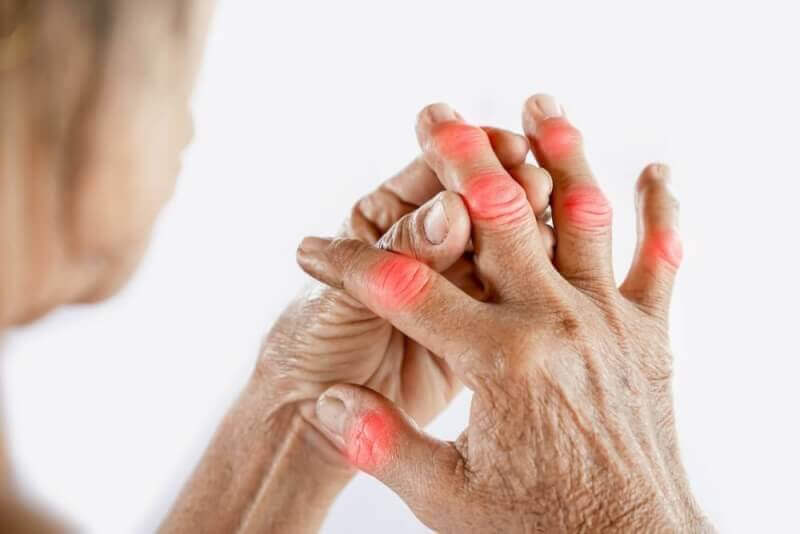What is Rheumatology?
Rheumatology is the field of medicine that diagnoses and treats painful rheumatic diseases. There are many subtypes of painful rheumatic diseases involving joints, the membranes lining the joints, tendons, muscles, bones or various organ systems. There are also diseases that accompany rheumatic problems. Rheumatic diseases are chronic diseases that start in childhood and continue into adulthood and old age.
What are rheumatologic conditions?
These diseases are basically divided into inflammatory and non-inflammatory. Non-inflammatory rheumatic diseases are more common in the population, but their treatment is easier and shorter than inflammatory rheumatic diseases. Although these rheumatic diseases do not require lifelong medication, they tend to recur. In addition, non-inflammatory rheumatism does not damage the joints as much as inflammatory rheumatism and does not involve internal organs. The most common non-inflammatory rheumatism is osteoarthritis, also called joint calcification. In addition, lumbar and muscle spasms, meniscus tears, fibromyalgia, and tenkits are among the most common non-inflammatory diseases in the society.
Inflammatory rheumatism, on the other hand, is a rheumatic disease caused by inflammation of the immune system itself without any pathogen. Inflammatory rheumatism can affect mainly the musculoskeletal system but also the kidneys, heart, lungs and joints. Inflammatory rheumatic diseases often cause joint swelling and joint stiffness that lasts longer in the morning. Symptoms of inflammatory rheumatism can often be confused with infectious diseases. It is therefore extremely important to diagnose inflammatory rheumatism correctly. In addition, inflammatory rheumatic diseases are lifelong chronic diseases.
What are the diseases that rheumatology doctors are interested in?
There are many different rheumatic problems that fall within the competence of rheumatologists. Among the most common rheumatic diseases in the society are the following.
Rheumatoid arthritis
Rheumatoid arthritis, one of the types of inflammatory rheumatism, is also the most common type of inflammatory rheumatism. Rheumatoid arthritis, also called inflammatory joint rheumatism, is more common in women. Rheumatoid arthritis, which is common in women between the ages of 50 and 60, affects the hands, wrists, fingers, toes, elbows, ankles, shoulder and knee joints. Rheumatoid arthritis in small joints affects the joints symmetrically. Patients with rheumatoid arthritis usually have high levels of inflammation in the blood. For this reason, blood tests such as complete blood count, sedimentation, rheumatoid factor, CRP, anti CCP should be performed to make the diagnosis. In addition, graphs of the hands and feet should be taken to determine whether rheumatoid arthritis causes joint damage. Advanced stages of rheumatoid arthritis can lead to joint deformities and disability.
Ankylosing spondylitis
Another type of inflammatory rheumatism is ankylosing spondylitis. Ankylosing spondylitis, which affects the lumbar and back region, especially the spine, is a disease characterized by low back pain and low back stiffness, the first symptoms of which occur in the morning and decrease with movement, as the joints in the spine are involved. Ankylosing spondylitis is often diagnosed late because it causes similar symptoms to muscle spasms and herniated discs, which are common in the community. Ankylosing spondylitis, which is more common in men than in women, especially affects men under the age of 40. Ankylosing spondylitis causes various complications such as inflammatory bowel disease, uveitis or psoriasis.
Psoriasis rheumatism
When psoriasis is associated with inflammatory rheumatism, it is called psoriatic rheumatism. Psoriasis rheumatism, which affects approximately 20% to 40% of psoriasis patients, is a type of inflammatory rheumatism that involves the movable joints throughout the body and the spine. Among the complaints seen in patients with psoriatic rheumatism are joint pain, low back pain in those with spinal attitude, swelling in the joints, neck pain and limitation of movement. If psoriatic rheumatism is ignored and untreated, it can lead to permanent disabilities over time.
Gout
In gout, another type of inflammatory rheumatism seen in the joints, uric acid precipitation occurs in the joints. The accumulation of uric acid in the joints causes swelling, pain and redness in the joints. Uric acid collapse, which is seen especially in the big toe, can also be seen in the hand, elbow, upper finger and large joints. Gout, the cause of which is not known exactly, is a type of disease seen especially in men. Untreated gout causes damage to the patient's joints.
Familial Mediterranean fever
Familial Mediterranean fever, one of the most common inflammatory rheumatic diseases in the Mediterranean basin, affects the peritoneum, heart and lungs. In some cases, inflammation causes joint pain and swelling of the joints. Since it is one of the genetically inherited diseases, it is more common especially in consanguineous marriages.
Osteoarthritis
Osteoarthritis, also commonly referred to as calcification, is a common degenerative joint disease that affects especially older people. Although it is particularly common in the spine, knee, hand, wrist and hip joints, other joints are also prone to arthritis. Diagnosing arthritis at an early stage also allows it to be treated successfully.
Sjögren's syndrome
Sjögren's syndrome, one of the autoimmune diseases that the rheumatology department deals with, is characterized by dryness in the eyes and mouth. Sjögren's syndrome is divided into primary and secondary. Primary Sjögren's syndrome only causes dryness in the eyes and mouth, but no other problems in the body. Secondary Sjögren's syndrome is associated with inflammatory rheumatism such as ankylosing spondylitis, lupus or rheumatoid arthritis.
Acute joint rheumatism
Although acute joint rheumatism can occur at any age, it is more common in children between the ages of 5 and 15. Acute joint rheumatism, a type of rheumatic disease that can affect the joints in the body as well as the nervous system, skin and heart, is usually seen after throat infections caused by streptococcal bacteria.
Fibromyalgia
Fibromyalgia, one of the soft tissue rheumatisms, is especially common in women. In the treatment of fibromyalgia, which is characterized by symptoms such as fatigue, sleep disorders and muscle pain, medication and physical therapy methods are applied to ensure sleep patterns and eliminate pain.
Osteoporosis Paget disease, Osteomalacia
Increased bone destruction, the root cause of which is advancing age, is also seen due to a decrease in bone density due to insufficient supply of calcium and vitamin D, which bone tissue needs. This leads to osteoporosis, also called osteoporosis. When bone destruction is seen more than normal, it is called paget's disease. Osteomalacia is a disease seen in individuals with vitamin D deficiency and causes bone softening.
Behcet's disease
Behçet's disease, which can be explained as inflammation of the blood vessels, is a disease characterized by wound formations, especially in the mouth and genital area. Since Behçet's disease is a systemic disease, which is usually influenced by genetic factors, many tissues and organs can be affected. For this reason, it is inevitable that patients with Behçet's disease will require long-term treatment and continuous follow-up.
Vascular inflammation
Vascular inflammation, also called vasculitis, is caused by the immune system attacking the vascular tissues, unlike inflammation due to pathogens. For this reason, patients with vasculitis suffer from joint and muscle pain, fatigue, weight loss and fever. The treatment of vasculitis, which can cause serious complications up to organ damage, requires a long follow-up.
Infectious arthritis
Infections caused by various pathogens affecting the joints are called infectious arthritis. Unlike other inflammatory rheumatic diseases, the treatment of infectious arthritis involves the use of antibiotics, antiviral or antifungal drugs, depending on the type of pathogen.
Rheumatic diseases affecting connective tissue
As mentioned earlier, rheumatic diseases affect many different tissues. Among the types of inflammatory rheumatism that cause connective tissue to be affected are the following.
- Systemic Lupus Erythematosus
- Sjögren' s Syndrome
- Systemic Sclerosis
- Myositis
- Mixed connective tissue disease
- Andiferentiated connective tissue disease
Inflammatory rheumatism, which affects the connective tissue, does not usually cause joint damage.
Inflammatory rheumatisms that cause the vessel walls to be affected
Systemic diseases that cause inflammation of the vessel walls, also called vasculitis, include
- Emporal Arteritis
- Takayasu Arteritis
- Behcet' s disease
- Polyarteritis Nodosa
- Microscopic Polyangiitis
- Granulomatous Polyangiitis
Vasculitis involves all types of vessels and characteristic symptoms include oral aphthae, uveitis, vascular occlusions, skin manifestations and vasodilation.
In which cases rheumatology should be consulted?
Rheumatology department is the department authorized for the diagnosis and treatment of rheumatic diseases. For this reason, it is recommended that people with one or more of the symptoms of rheumatic diseases consult a rheumatology department. Among the most common symptoms of rheumatic diseases are the following.
- Inflammation with joint swelling, pain, stiffness, redness, burning
- Decreased kidney function
- Tenderness in various tissues, especially joints
- Neurological symptoms such as headache , numbness in the hands and dizziness
- Difficulty in moving joints
- Joint deformations
- Complaints affecting the digestive system
- Excessive weight loss
- stiffness and stiffness in the joints, especially in the morning
- Pain and aching sensations in various parts of the body
- Fire of unknown origin
- Persistent joint pain
- Difficulty with deep breathing
- Excessive hair loss
- Redness on the face
- Heat and color changes in the hands
- Dry mouth and eyes
- Burning and redness in the eye
- Blurred vision
- Sores in the mouth and genital area
- Recurrent muscle pains of unknown cause










